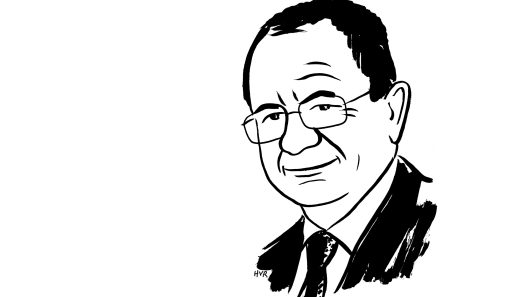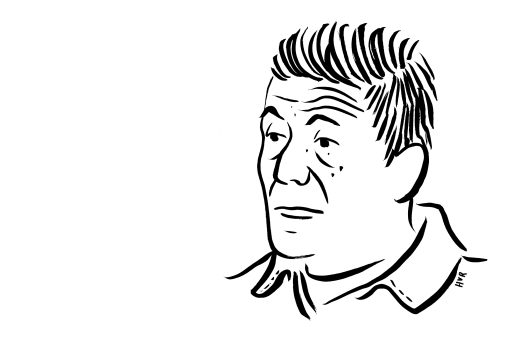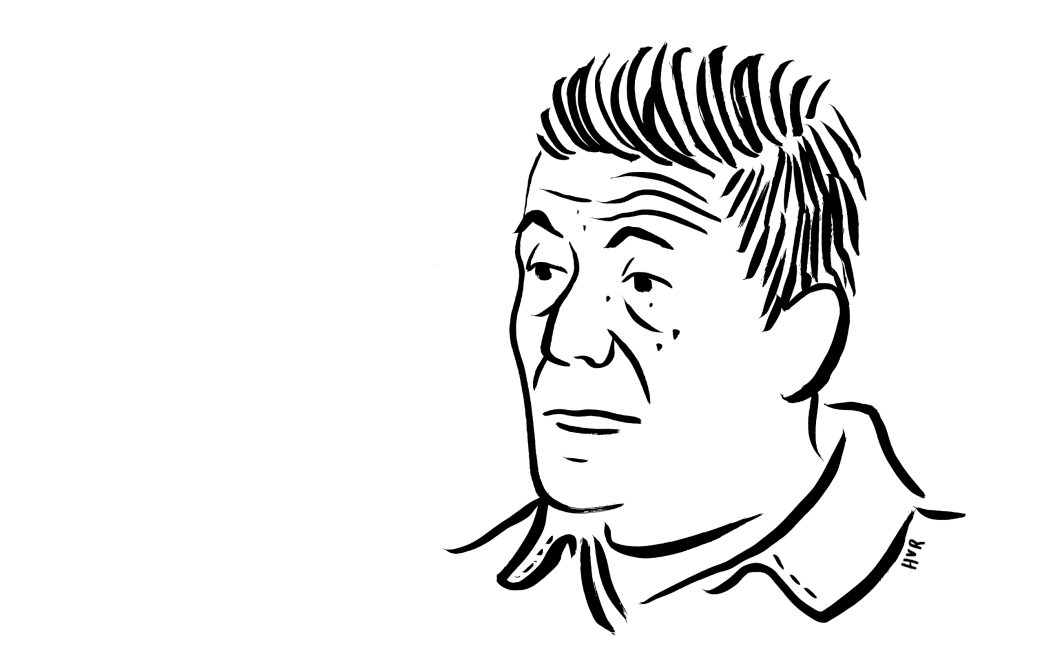Pierre Barbancey is a senior reporter at L’Humanité. He has covered the Second Gulf War, the wars in Afghanistan, Lebanon and Syria, the Israeli-Palestinian conflict and the Arab revolutions. He is a winner of the Bayeux Prize for War Correspondents.
Guillaume de Sardes: The collapse of the Syrian Arab Republic in the face of Islamist rebels in December 2024 and the flight of Bashar al-Assad have shaken up the Middle East. Before trying to understand the consequences for various key players, could you summarise for us, one year on, what the new political situation in Syria is?
Pierre Barbancey: The fall of Bashar al-Assad on 8 December 2024 surprised everyone with its suddenness. The former president was clearly abandoned by his main supporter, Russia, which was preoccupied with Ukraine and annoyed by his uncompromising attitude. The Syrian president proved incapable of initiating any reforms, let alone national reconciliation. In just a few days, the forces of Hayat Tahrir al-Sham (HTS, Levant Liberation Organisation), which had left Idlib in the north, where they reigned supreme under the benevolent eye of neighbouring Turkey, reached Damascus with virtually no fighting. This fact was confirmed to me a few days later by a soldier who had returned home to a suburb of Damascus.
As is often the case in such situations, the regime’s senior officials fled. This flight was clearly anticipated by the insurgents (no doubt advised by Turkish and Western advisers), as they immediately took control of the institutions in an unofficial but by no means improvised transfer of power.
However, some questions remained: what would the regular army (Syrian Arab Army) and, above all, the Baath Party do? Would armed resistance to the new regime be organised? Another unknown factor was HTS itself. This organisation, founded by the al-Nusra Front (the Syrian branch of al-Qaeda), had officially severed its ideological ties with its parent organisation, encouraged to do so by Western sponsors keen to give HTS a different image. But it still included many jihadist groups and former members of the organisation known as Islamic State (Daesh).
Very quickly, foreign delegations, particularly from Germany, visited the country to meet with its new leader, Ahmed al-Sharaa, known by his nom de guerre Abu Mohammed al-Joulani. This was a way of endorsing him on the international stage and supporting the ongoing process, despite uncertainty surrounding his true intentions. In fact, between the central discourse – reassuring when it came to minorities, more vague when it came to women’s rights – and the local realities – in Aleppo, for example, I was able to talk to an Armenian female judge who was no longer allowed to practise – it was difficult to form an opinion. In Idlib itself, where I travelled in February 2025, armed Islamist groups were very much in evidence. One of the soldiers, misunderstanding the reasons for my presence, even asked me if I had come to wage jihad!
In any case, on 17 December 2024, the European Union reopened its embassy in Damascus. The main EU countries followed suit in the months that followed. The United States lifted the sanctions imposed on Assad’s Syria. Finally, in a crowning gesture, Ahmed al-Charaa, interim president, was received at the White House on 10 November 2025. These gestures were not without cost, and the new government was asked to align itself with US regional strategy, notably by establishing closer ties with Israel.
Domestically, the situation is even more complex given the fragile economic situation. In March this year, bloody attacks against the Alawite minority left 1,300 people dead, three quarters of whom were civilians. These atrocities showed that the central government did not have complete control over its troops, among whom jihadist groups continue to operate and have not abandoned their objectives. In the south, unrest broke out in the Druze mountains in July, while Israel, which has occupied the Golan Heights since 1967, advanced deeper into Syrian territory, establishing a buffer zone that encompasses numerous villages, as I was able to observe on the ground. Finally, the Kurdish question has become acute. The Syrian Democratic Forces, following an agreement reached in March with Damascus, could join the new Syrian army. But in reality, discussions are stalling over the nature of the state being built, which Charaa wants to be centralised, and therefore over the status of Rojava, the Kurdish zone, where an autonomous administrative zone has existed for more than ten years now.
You are one of the few senior reporters to have visited the area. Do you feel that what you saw matches the way the media is reporting on the situation?
For the moment, the mainstream media, which was previously totally opposed to Bashar al-Assad’s regime and strangely unconcerned about the Islamist and jihadist nature of the main opposition group, seems to me to be reporting on what is happening while avoiding any deeper analysis of the nature of the new regime.
With the fall of Bashar al-Assad, Iran has lost an ally and, in all likelihood, its direct access to Lebanon via the land corridor that linked its territory to Beirut via Baghdad and Damascus. The Shiite arc no longer exists. What are the consequences for Iran? Will its regional position be permanently weakened?
Iran has undoubtedly emerged weakened from the recent period. First, as you point out, by being forced to withdraw all its forces – mainly the Revolutionary Guard Corps and Afghan Hazara refugees in Iran – from Syria. Tehran finds itself all the more isolated as its main Lebanese ally, Hezbollah, has lost power, struck by Israel, which decapitated its leadership (Hassan Nasrallah was assassinated on 27 September 2024 in Beirut) and destroyed part of its fighting forces and heavy weaponry. Tel Aviv also bombed Tehran and several sites suspected of housing nuclear facilities.
One might think that the Israeli attacks (which also destroyed Hezbollah positions in Syria during the final uprising in December 2024) are part of a broader plan to enable Saudi Arabia’s regional hegemony, which suits the United States. However, this does not take into account Turkey, which will not allow itself to be marginalised, given its geographical position, its NATO membership and its international influence.
Israel took advantage of the fall of the Syrian regime to create a buffer zone between its territory and Syria’s, starting from the Golan Heights. Israel also decided, with the help of the United States, to destroy hundreds of Syrian military installations to prevent them from falling into the hands of Islamists. What is your view on these actions? What is the current relationship between Syria and Israel, and how might it evolve?
Benjamin Netanyahu’s strategy is part of an attempt to create a Greater Israel, encompassing Gaza and the West Bank. To achieve this, the Israeli Prime Minister has taken care to align his actions with the broader US plan, conceived and implemented decades ago: to eradicate all opposition to the regional projects of the world’s leading power, which would thus control energy resources and be able to devote itself to its trade war against China. Israel therefore helped to bring about the fall of Bashar, to reshuffle the cards in Lebanon by weakening Hezbollah and to crush Iran’s ambitions for domination.
In early September 2023, during the G20 summit held in India, the United States pushed for the approval of an ambitious logistics corridor project linking India and Europe to the Middle East, a project in which Saudi Arabia is expected to play a leading role. An agreement in principle was signed between the United States, India, Saudi Arabia, the United Arab Emirates, the European Union, France, Germany and Italy. Ten days later, just a few weeks before the 7 October attack by the Palestinian Hamas, Benjamin Netanyahu stood at the podium of the UN General Assembly and held up a map, declaring: ‘This is the new Middle East.’ The Palestinian territories had disappeared. Grabbing a marker, he traced what he called the new trade routes connecting Asia to Europe via the Middle East and, above all, Israel.
With the genocidal war in Gaza, he killed two birds with one stone, permanently eliminating what he considers to be the Syrian threat. He created a buffer zone and destroyed military installations. This has not prevented Damascus and Tel Aviv, since the Islamists took power in December, from initiating a dialogue to reach a security agreement that could be finalised before the end of the year. Israel is calling for the establishment of a demilitarised zone in southern Syria. In September, Agence France Presse (AFP), citing statements by a military official in Damascus, reported that the Syrian army had withdrawn all its heavy weapons from the south of the country.
Bashar al-Assad is currently in exile in Moscow. His ties with Russia could have threatened the continued existence of the Russian bases in Tartus and Hmeimim, and thus Russia’s entire influence in the Mediterranean. Ultimately, this does not seem to be the case. What do you think? What card is Russia playing here?
Bashar al-Assad owed the survival of his regime solely to the intervention of the Russian army at the end of September 2015. Moscow had two bases, one naval, in Tartus, the other air, in Hmeimim. Their strategic importance is clear, as they are Russia’s only two bases in the Mediterranean, serving as bridgeheads to Africa in particular. As soon as Bashar fell, all eyes turned to Hmeimim and Tartus, with most observers certain that Vladimir Putin would lose them. However, neither Hmeimim nor Tartus were attacked by the rebels in December. Russian diplomacy is more subtle than some people think. It was also in anticipation of such an eventuality and after weighing up the chances of survival of the former regime that the Kremlin finally abandoned the Baathist regime.
A meeting involving Turkey, Russia and Iran was held a few days before the start of the rebel offensive from Idlib. With so much at stake, reality politics takes precedence. Vladimir Putin could not have been clearer on 15 October when he received Ahmed Sharaa in Moscow. ‘We have had diplomatic relations for more than 80 years. During this period, relations between Syria and Russia have always been friendly,’ he said. ‘In Russia, we have never had relations with Syria linked to political circumstances or particular interests.’ At the end of this official visit, Sharaa promised to respect all previous agreements, which include Russia’s position in the two bases. But in reality, no new agreement has been signed, a sign of the fragility of these statements. The interim Syrian president understands, however, that he must not put all his eggs in one basket, as the saying goes. Reaching agreement with Russia on at least some points allows him to counterbalance US pressure. Moscow has thus offered economic aid in the areas of energy and grain supplies, as well as logistics for port infrastructure.
Turkey, which supported the victorious Islamist rebels, appears to be the new master of the Syrian game. Is this really the case? What are its gains? What are the risks for the future?
Ahmed Charaa, the Syrian president, has always maintained excellent relations with the head of Turkish intelligence, Hakan Fidan. Recep Tayyip Erdogan has described him as the ‘keeper of his personal secrets’ and the ‘black box’ within the state! However, in June 2023, Fidan was appointed Minister of Foreign Affairs. This promotion may make him the most powerful man in his country after the president. This detail serves to emphasise that the ties between the new Syria and Turkey are indeed very close. Last February, in Idlib, the only currency accepted by traders was the Turkish lira. Furthermore, on 4 May 2017, an agreement known as the Astana Agreement (named after the capital of Kazakhstan) was signed by Russia, Iran and Turkey, establishing four ceasefire zones in the country. These zones were located in Damascus (Eastern Ghouta), Deraa, Rastan and the province of Idlib. The first three were recaptured by loyalists in 2018. The last remained under the supervision of Ankara, which deployed between 13,000 and 15,000 soldiers there.
Turkey intends to maintain control over this relationship, firstly because it underpins its regional power and its indispensable role, but also, and perhaps more importantly, because Turkish troops have intervened directly in northern Syrian territory to combat Kurdish forces with the aim of preventing the creation of a continuum stretching from Afrin in the west to Qamishli in the east. No fewer than six military operations have been carried out. To achieve this, Turkey has relied on Islamist groups, including Ahmed Sharaa’s HTC, and has set up a paramilitary militia composed of Syrian jihadists, some of whom came from Daesh.
Erdogan also intends to use the issue of the three million Syrian refugees currently on Turkish soil. An office of the Turkish immigration management authority has even been set up to exchange information with Damascus. A Turkish consulate is expected to open in Aleppo. For the time being, Turkey appears to be the big winner in the new situation.
Given the internal and external tensions affecting Syria, should we not fear that the country will break up and remain divided for a long time ?
The break-up of nation states as we know them in the Middle East is a possibility that continues to feature in US plans. Israel is also in favour of this. We saw this after the independence referendum held in Iraqi Kurdistan on 25 September 2017, the result of which (yes to independence) was only recognised by Tel Aviv. The creation of micro-states on ethnic or religious grounds (Alawite, Druze, Kurdish, etc.) would reinforce the idea of the existence of a Jewish state in the region, which would retain all its power in the face of rump states.
To conclude, what are your thoughts on the reception in Paris and then Washington of the jihadist and interim Syrian president, Ahmed al-Sharaa? Did President Emmanuel Macron in particular demonstrate a realism, in the geopolitical sense of the word, that he does not usually seem capable of?
As I said earlier, Western countries were quick to recognise the new regime, the nature of which remains to be defined. Syria borders Turkey, Iraq, Jordan, Lebanon and Israel, and no one is forgetting that. A wave of ‘Charaa-mania’ (the term was whispered to me by a French diplomat) quickly swept through the Quai d’Orsay, causing them to forget Charaa’s jihadist past and his abuses against civilian populations, which had accompanied him since his time in Iraq and his meeting with the leader of Daesh, Abu Bakr al-Baghdadi, to his seizure of power in Syria.
Since 2011 and the first protests that broke out first in Deraa in the south and then across the country, French diplomacy has preferred to deal with Islamists rather than with the progressive wing of the Syrian opposition because the goal was nothing less than regime change. The Islamists found a rear base in Turkey, while Western intelligence services established their training centres in Jordan. Emmanuel Macron has followed this policy set out by his predecessors and is now trying to reap some benefits from it. The contract with the shipping company CMA-CGM for the operation and expansion of the port of Latakia has just been renewed for thirty years.





